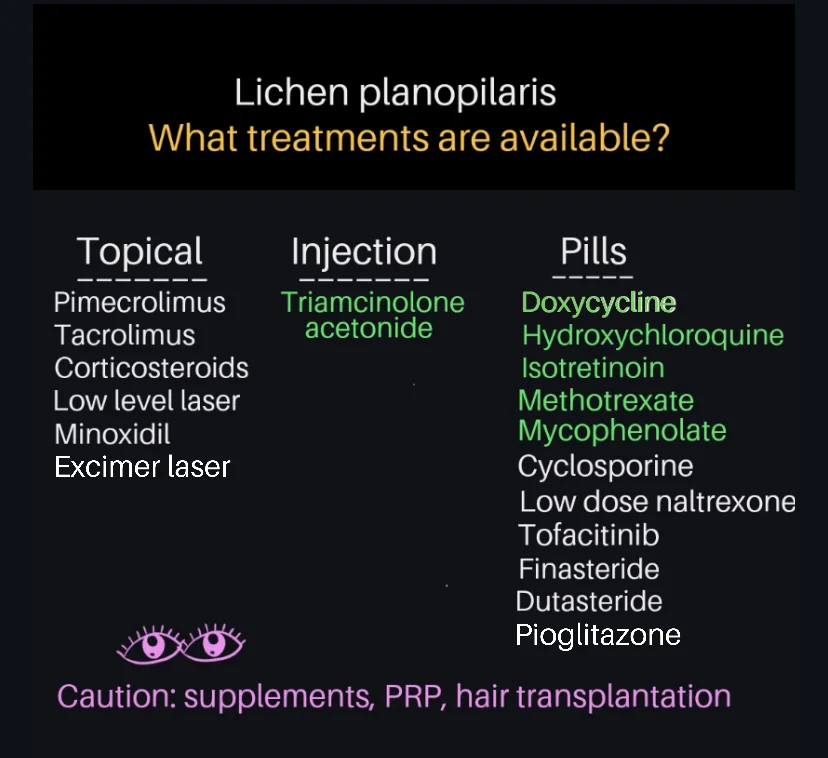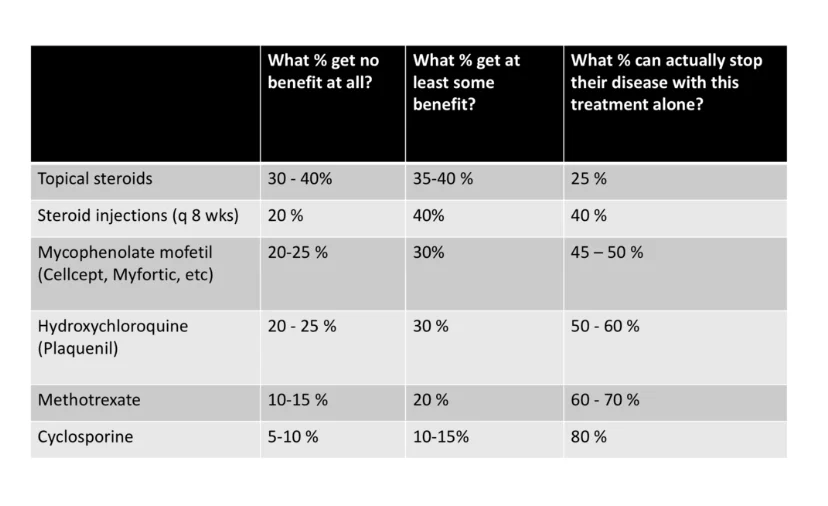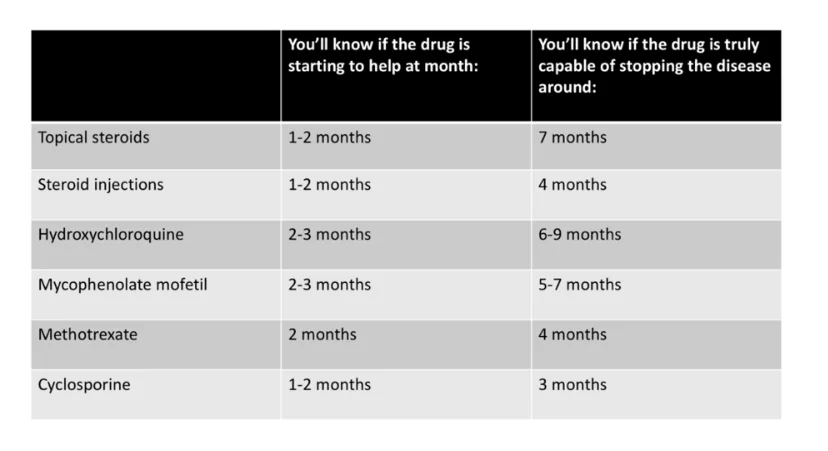Treatment Options for Lichen Planopilaris: What to consider?
Lichen planopilaris: What are the treatment options to consider?
Lichen planopilaris is a scarring alopecia with the potential to cause permanent hair loss. Treatment helps stop the disease in many but may or may not actually help the hair to grow back. Treatment, however, may help reduce symptoms such as scalp itching, burning or tenderness.
Lichen planopilaris: A variety of options are available although some are clearly better than others.
The Main Nine Treatments of LPP
There are a variety of treatment options available for LPP. In fact, taken together there are well over 25. This list in this figure is not complete by any stretch. However, several options would be considered "standard options" or “first-line options” and have the best medical evidence. These options include topical steroids, topical calcineurin inhibitors, steroid injections, and oral medications such as hydroxychlorqouine, doxycycline, methotrexate, cyclosporine and mycophenolate and isotretinoin. These are by far the most helpful nine treatments. Oral cyclosporine is probably the most helpful treatment for LPP overall but rarely we start with this due to side effects (it's viewed as a “third-line option” in my pratice). It may help up to 80 % of patients. The next best is probably methotrexate and hydroxychloroquine with up to 60 % benefiting.
The First Step: Where does one start?
Typically, I start with topicial steroids, (sometimes with topical calcineurin inhibitors), and steroids injections and give careful discussion to whether to start doxycycline or hydroxychloroquine. Other options that can be considered (especially if these 9 options do not work) include low level laser, low dose naltrexone, pioglitazone, excimer laser, anti-androgens, azathioprine, and tofacitinib.
These treatment options do not help everyone and it may take 4-6 months to get an idea if it’s helping stop loss. Symptoms however can go away very quickly on the right treatment (3-4 weeks). In discussing treatment options with one’s physician, side effects, ease of use, and cost must be taken into account. Some treatments like topical steroids and steroid injections have a fairly good side effects profile if used correctly. However, they rare stop the disease completely if used alone (but rarely can). Nevertheless they may provide some degree of benefit. Other options such as the oral immunomodulating medications are superior to topical steroids and steroid injections but have greater potential side effects that must be weighed.
Cautionary Tales
Starting with treatments like platelet rich plasma for LPP is common but not based on solid evidence. Rarely do patients really benefit. Over the counter supplements don't shut down the disease and are not first line either. Hair transplantation for LPP can be done but only when the disease is 100 % quiet (patient has no symptoms and has not lost any hair and taken no medications) and has shown itself to be 100 % quiet over 2 years of extremely careful monitoring. If photos of a patient taken two years apart look identical, a patient with LPP may be a candidate for surgery. Even then the disease can still flare and long term dermatological monitoring is needed.
This article was written by Dr. Jeff Donovan, a Canadian and US board certified dermatologist specializing exclusively in hair loss.



